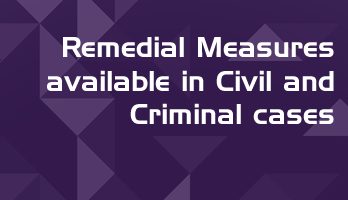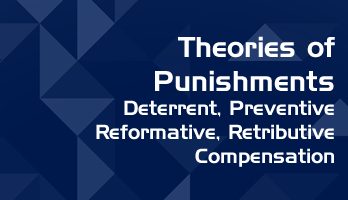Free Full Course Available on LawMint's YouTube Channel
How to Land Your Dream LLB Internship in a Top Law Firm
- Part 1 - Introduction
- Part 2 - Internship Planning
- Part 3 - Internship Research
- Part 4 - Building Your Profile
- Part 5 - The Email
- Part 6 - The Resume
- Part 7 - The Cover Letter
- Part 8 - The Interview
- Part 9 - Self Development
Practical and comprehensive course, with real examples and step-by-step analysis of the complete internship application process. Check out LawMint's YouTube channel now!
Legal Systems of the world can be divided into four broad categories
- Common Law System
- Continental Legal System
- Socialist Legal System
- Legal System among International Institutions and countries inter se.
Continental Legal System
The Legal System followed by the countries in the mainland of Western Europe (which is commonly referred to as ‘Continent’ as distinguished from the island of England) is referred to as Continental Legal System.
The origin of ‘Continental Legal System’ can be traced to the old age Roman Empire of the 5th century A.D. You might have heard about the Roman Emperor Justinian (A.D. 483-565) during whose time many rules and regulations were compiled and were called ‘Code’. From that time onward, this legal system spread all over Europe, including England for some time.
In the rest of the world, this legal system was imposed during the era of colonialism during the seventeenth and eighteenth centuries. Now you may find this legal system present in many countries of Southern America and parts of Africa.
As you might be aware that in India, even French and Portuguese had come to establish their suzerainty for some time and during that period they had successfully imposed their legal system in those places, such as Pondicherry, Goa, Daman, and Diu.
You may identify the ‘Continental Legal System’ on the basis of the following salient features:
- Importance of Acts, Statutes passed by the Parliament or competent authorities;
- Composition of judiciary;
- Power of the judges to make law; and
- Inquisitorial approach of the court proceedings.
‘Continental Legal System’ originated in Europe and was found by the scholarly efforts of the European Universities (in particular, German) in the twelfth century on the basis of the compilations of the Emperor Justinian of the Roman Empire. Therefore, this legal system is also referred to as “Romano-Germanic Legal System”.
In this Legal System, law has evolved primarily for historical reasons, as an essentially private law, as a means of regulating the private relationships between individual citizens.
(a) Importance of Acts, Statutes passed by Competent Legislature
The Acts passed by the Parliament or the competent authorities receive the highest importance in this legal system. Authority of the competent legislature is to assimilate the scattered rules and then draft them according to the modern conditions and get them passed in the Parliament. This is called the process of ‘Codification of Rules’.
For example, Rules assimilated and framed in the area of crimes are called ‘Penal Code’.
These rules passed by the Parliament are then applied by the judges in the resolution of disputes. Judges regard the rules framed by the Parliament as supreme and do not try to change it by asserting their own authority as in the Common Law family.
They may give their own interpretations of the vague language used in the Act, but they would say that it would be not binding except upon the parties to the dispute. Interpretations of the rules framed by the Parliament are given not by the judges but by the legal scholars and academicians.
The abstract law passed by the Parliament is given high regard even by the judges and advocates.
(b) Composition of Judiciary
Judiciary constituted in the Continental Legal System is from diverse fields as a person of any background can be a judge in this legal system. Persons who have specialized knowledge of any particular field may be appointed as judges.
Thus, an engineer or a doctor or a scientist may become a judge. There is no requirement to study law as a separate discipline for a requisite number of years and practice in the court of law thereafter. So, the judges of the higher courts or trial courts are appointed from diverse backgrounds and without the need of a degree in legal education.
Legal education is also imparted in the countries which follow ‘Continental Legal System’, but that is not the only mandatory requirement to become a judge.
In India too, you might find that a technical member is sometimes appointed by the court to assist them in arriving at a conclusion in which any technical problem is also involved.
(c) Power of the judges to make law
Judges in ‘Continental Legal System’ do not make laws and their judgements do not carry authority except in the dispute before the court. They apply the laws made by the legislature and cannot make the law themselves. In other words, the judgements rendered by the judges of even the higher courts do not enjoy the status of ‘judicial precedents’ as in the Common Law System.
Their judgements are given respect by the judges in other cases but they are not bound by them. For example, the judgements given by the highest court of appeal in France, namely, ‘Court de Cassation’ are not binding on all courts of France. However, the judgement of that Court is given high respect in the judicial bodies.
The judges of the highest court cannot strike down the law passed by the legislature; they can only apply the law passed by the legislature. One of the advantages of this system is that the voluminous judgments of courts would not have to be read by the lawyers to know the law which is the case in ‘Common Law System’ and an advocate has not only to know the law passed by the Parliament and legislatures, but also the judgments delivered by the higher judiciary.
(d) Inquisitorial approach of the court proceedings
Unlike the passive role of the judges in finding the truth and being dependent on the ability of the advocates to establish the fact of the matter, the judges in the ‘Continental Legal System’ play active roles in finding the truth. The approach followed in the court proceedings is not adversarial in nature but ‘inquisitorial’ (the term ‘inquisition’ means investigative).
The judges do not simply act as a referee between the prosecutor and the defense but they actively investigate the matter themselves with the co-operation of all disputing parties and try to establish the truth by collection of evidence.
Collection of evidence is thus not the sole responsibility of the advocates but the judges too. Judges may go to the scene of the crime and collect evidence on their own if they think that the evidence produced by the advocates of the disputing parties leave some doubts as to the establishment of the truth.
Judges are not passive observers but active participants in the quest to establish the truth. In India, you may see the application of this approach in the fact-finding commissions or inquiry commissions established by the government.
Questions
What are the salient features of Common Law System?
The salient features of Common Law System are as follows:
(a) judgements rendered by the higher courts enjoy binding authority, which is technically known as ‘judicial precedent’;
(b) judges of the courts are highly skilled persons who have special knowledge of law and are experienced in the administration of justice;
(c) court proceedings are based on the adversarial nature and the judges play a passive role; and
(d) laws passed by the legislature enjoy the same status as judicial precedents.
Discuss the important traits of Continental Legal System.
The important traits of Continental Legal System are as follows:
(a) judgements rendered by the higher courts do not enjoy binding authority and are not regarded as ‘judicial precedents’;
(b) judges of the courts are not essentially from a legal background but from diverse fields, such as arbitration, engineering, medicine, accountancy;
(c) court proceedings are not adversarial in nature, but are called ‘inquisitive’ and the judges play an active role; and
(d) laws passed by the legislature enjoy the highest authority.
Do you think that India’s legal system is a combination of ‘Common Law’ and ‘Continental Legal System’ or is it primarily influenced by ‘Common Law System’ with only a few features of Continental Legal System?
India’s Legal System is primarily influenced by ‘Common Law System’ with only a few features of Continental Legal System because of the following factors:
(a) Higher Judiciary enjoys a high status in the whole legal system and its judgments are authoritative;
(b) Court proceedings are adversarial in nature; and
(c) Judges are highly skilled.
However, some of the features of Continental Legal System are also present, such as
(a) presence of tribunals in which judges are appointed from any field, including from the formal judiciary; and
(b) the court proceedings are not adversarial.
Mention if the following statements are correct or incorrect
The origin of the ‘Common Law’ is linked to ‘Royal Power’.
The above statement is correct.
The above statement is correct.
India is a member of Common Law family of Legal Systems.
The above statement is correct.
The origin of Common Law can be traced to the old age Roman Empire of the 5th century A.D.
The above statement is correct.
Article summary : Adherents to Continental Legal System follow four major characteristics:
(a) Binding authority of Acts, statutes passed by competent legislature and judges regard these Acts as supreme and do not try to change them by asserting their own authority;
(b) Composition of judicial institutions from a diverse field;
(c) No binding authority of the judgements delivered even by higher courts & Tribunals; and
(d) Inquisitorial approach of the Court proceedings
Free Full Course Available on LawMint's YouTube Channel
How to Land Your Dream LLB Internship in a Top Law Firm
- Part 1 - Introduction
- Part 2 - Internship Planning
- Part 3 - Internship Research
- Part 4 - Building Your Profile
- Part 5 - The Email
- Part 6 - The Resume
- Part 7 - The Cover Letter
- Part 8 - The Interview
- Part 9 - Self Development
Practical and comprehensive course, with real examples and step-by-step analysis of the complete internship application process. Check out LawMint's YouTube channel now!
Acknowledgement : This article is adapted from Swayam – NIOS course material.












